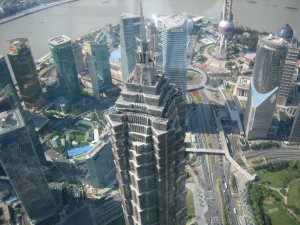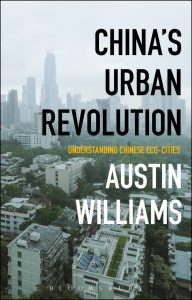Film Review: ‘City Visions’ #5
 Steve Nash | 2 October 2014
Steve Nash | 2 October 2014
Megacities – Twelve Stories of Survival. Dir. Michael Glawogger, 1998
This film is a tour de force. Part documentary and part fictionalised account of the lives of those fighting to get by in the megacities of Mumbai, Mexico City, New York and Moscow, it is also a visual poem with a dream like qualitywhose images are intended to stay with the viewer for a long time. It is now part of the legacy of the work of Michael Glawogger who tragically died earlier this year at the age of 54 whilst working on his latest film. This is a sad loss as Glawogger’s work in this film is experimental and courageous; it offers a genuine exploration of the resilience of people’s lives in difficult circumstances. Rather than looking present a message, the director sought to show the dignity still present in people’s lives amid a world of necessity and little choice. He has drilled down to the core of a society and tried to present it to us irrespective of our own preconceptions.
The film’s twelve chapters tell the tales of those surviving day to day on the streets of the four cities. From Baba Khan, the paint recycler, to Modesto, the chicken feet vendor, Glawogger’s protagonists are people creating a service from the left overs of mainstream society and production. Others, such as the New York hustler Toni, create a service from the desires and wants of people passing by – even when his ‘service’ is a fraud. When you see the group of trash scavengers wading through the sewage of the Mumbai waterways, you realise that human ingenuity and resilience is probably the greatest factor in the survival of these Megacities – irrespective of what help is offered by the authorities.
After seeing this film, what remains in the mind is a series of images. We see dog fights, chickens being decapitated before being tossed into buckets with their wings still flapping, prostitution, and drug addicts. We occasionally glimpse cross overs from one story to the next. Chickens appear in three of the stories reflecting their importance in the global food chain; a shirt produced in a Mumbai sweat shop appears a couple of times on the streets of New York giving a nod to concerns over globalisation. But themes are never pursued to the detriment of the film itself, which often contains wonderfully experimental scenes. There is a superb sequence on the Moscow underground when the secret reading of the commuters is voiced and their dreams and thwarted aspirations are heard. Dreams and delusion mix with poverty and violence to create a work of significant cinematic power.
The film was made in 1998 and stands alone as a wonderful piece of cinema. However just as cities themselves are ever-changing, so people’s lives within them are transient, and the product of shifts in context. In China the urban landscape has been transformed in line with the greatest migration in human history. Even though today the Chinese migrant worker still faces some of the same challenges seen in the film, and the urban environment remains a testing one for those who live there, nevertheless there are genuine glimpses of progress in the modern urban centres that are being created today; increasing numbers of people are realising their hopes and dreams. Such tangible realisation of human progress helps put into perspective the praise from well-off westerners (Prince Charles amongst them) for the likes of the Dharavi slums in Mumbai. It is the loss of faith in human progress in the developed world which means that actions such as materials recycling in slum areas are now frequently lauded as offering useful lessons in how we in the west should aspire to live – rather than being recognised as the survival mechanisms that urbanising populations in the developing world aspire to escape from.
Cities – or ‘arrival cities’ as the writer Doug Saunders put it – are places of transition, of movement both within the urban area itself and also between the countryside and the city. They offer the possibilities of people coming into the urban sphere and practically making something of their lives. Yet cities also help create a social sphere that enables the possibility of people existing beyond the day to day grind of surviving., a state of affairs Glawogger hints at in a sequence towards the end of the film as one character confides that ‘I survive the city by escaping it and being able to return.’ It is that choice that best highlights the success of a city.
Steve Nash is a freelance writer based in London.






